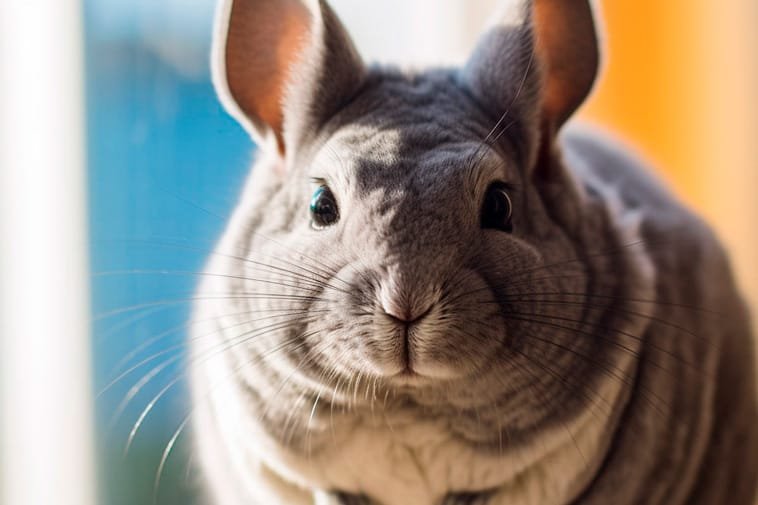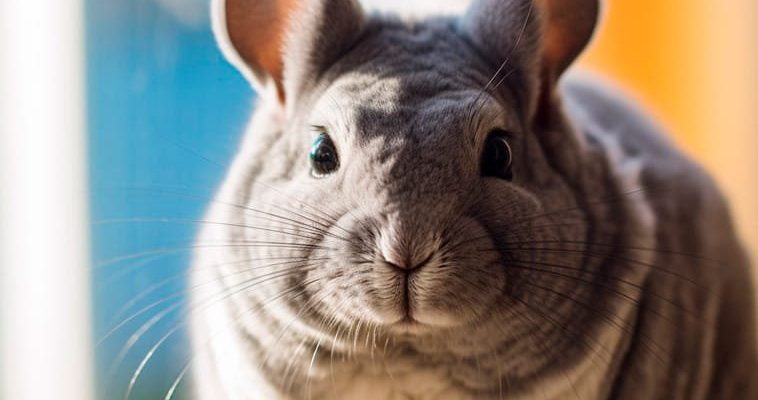
Imagine sitting across from a friend at your favorite café, sipping coffee and chatting about the joys and challenges of pet ownership. You might mention how chinchillas aren’t just cute; they have specific needs and can develop issues if those needs aren’t met. Here’s the thing: understanding common health concerns in sapphire chinchillas isn’t just about avoiding problems—it’s about ensuring a long, happy life for your furry friend.
Respiratory Issues
Sapphire chinchillas, just like their standard counterparts, can be prone to respiratory problems. These little guys are sensitive to their environment, and factors like dust, poor ventilation, and extreme temperatures can trigger respiratory issues. Symptoms to look out for include coughing, sneezing, or unusual nasal discharge. Just like us, when chinchillas struggle to breathe, it can seriously impact their quality of life.
What can you do to prevent this? For starters, keep their living area clean. Regularly dust and clean their cage—using chinchilla-safe products is key. You might also want to ensure they’re not exposed to drafts or extreme heat. Maintaining a consistent, comfortable room temperature can help keep those little lungs healthy.
Dental Problems
Let’s talk teeth. Did you know that a chinchilla’s teeth grow continuously? If their diet doesn’t include enough hay or chew toys, they can develop overgrown teeth. This can lead to painful chewing difficulties and even infections. Imagine trying to eat with a mouth full of crooked teeth; it’s definitely not pleasant!
You’ll want to feed your sapphire chinchilla a proper diet rich in hay, which helps naturally wear down their teeth. Offering wooden chew toys is also a great way to encourage healthy teeth. Think of it like giving them a dental workout; it keeps their teeth in check and their smiles bright!
Digestive Issues
Chinchillas have sensitive digestive systems, and issues can arise if they consume the wrong foods. If you notice your sapphire chinchilla is less active or their droppings look different, it could be a sign of digestive distress. Common causes include sudden diet changes or eating too many treats.
Here’s how to ward off digestive problems: introduce any new food gradually. It’s like easing into a new hobby—you wouldn’t dive in headfirst without some practice, right? Stick to a balanced diet of hay, pellets, and small treats. Keep an eye on what they eat and adjust as needed.
Chewing and Biting Behavior
Sometimes, you might find your chinchilla gnawing on things they shouldn’t, like their cage bars or your favorite pair of shoes. This can be a sign of boredom or stress. Just as we might turn to snack on junk food during a stressful day, your chinchilla needs outlets for their energy and curiosity.
To prevent this, enrich their environment. You can add tunnels, chew toys, and even occasional supervised playtime outside the cage. It’s a way to keep them mentally stimulated and reduce unwanted behaviors.
Skin Issues
Sapphire chinchillas have incredibly dense fur that requires special care. Skin problems can arise from poor grooming, humidity, or parasites. You might notice excessive scratching or patches of missing fur, which could signal a health concern.
To keep their skin healthy, regular dust baths are crucial. This helps maintain their fur’s cleanliness and texture. Think of it as a spa day for your chinchilla! Also, be mindful of humidity levels; chinchillas thrive in a dry environment. If it’s too humid, consider using a dehumidifier to keep the air just right.
Heat Stress
Chinchillas are native to the cool mountains of South America, so heat stress can be a serious issue for them. If temperatures rise above 75°F (24°C), your chinchilla could start to feel uncomfortable, and extreme heat can even be life-threatening.
Keep them in a cool, well-ventilated area. You might want to consider using fans or air conditioning during the hotter months. It’s like finding a shady spot on a hot day—the goal is to keep your chinchilla comfortable and safe.
Owning a sapphire chinchilla can be a rewarding experience, but it comes with its own set of responsibilities. Understanding common health concerns and taking preventative measures can ensure your furry friend lives a long, healthy life. Just remember: a little awareness goes a long way.
So, the next time you find yourself talking about your chinchilla over coffee, you’ll not only share cute stories but also demonstrate how much you care. After all, giving a chinchilla the right environment and care is just as important as showering them with love. Embrace the journey, and enjoy every moment with your adorable companion!

